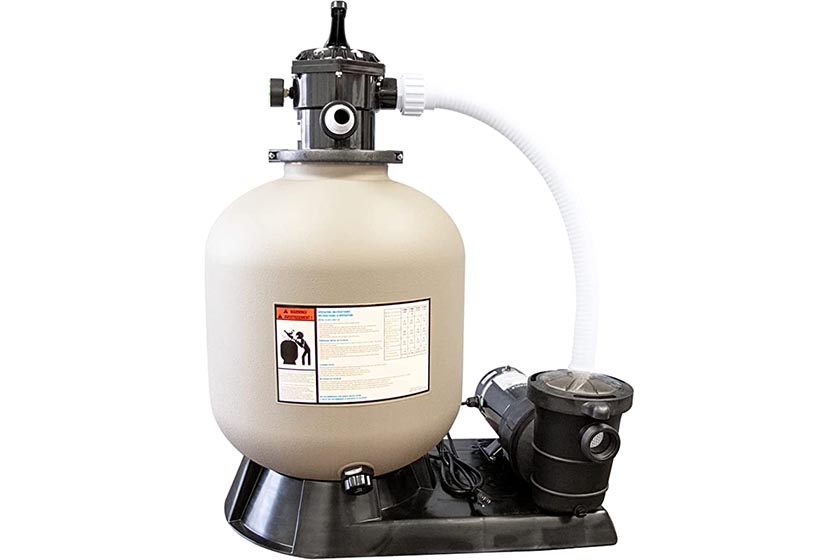How often do you change sand in the pool filter? You might have assumed that your filter isn’t working properly because of its low efficiency. You think that changing the sand in the pool filter is the greatest solution, but this is probably not the case. That doesn’t mean that you won’t have to replenish your pool filter sand at some point.
The sand may need to be replaced sooner than three years if your pool filter is used often throughout the year and has a high bather load.
Don’t worry if you have queries concerning ‘how often do you change sand in the pool filter’; we’ve got answers.
How can you change the sand in the pool filter?
- You’ll need to start by removing the old sand. Just take off the filter to get started. If your water filter has a multipart valve attached, disconnect it from the water supply.
- The next step is to remove the drain plug and allow the water to exit. Pull the tank apart and scoop out the sand. The laterals can be damaged if you use plastic cups.
- Once the sand has been removed, thoroughly clean the tank and check that all of the laterals are in place. Assemble the drain assembly now.
- Once you’ve completed the previous step, add water to the tank until it’s halfway filled. Your sand can then be poured in. Just make sure you level out the sand every time you add a bag to the bed.
- After you’ve finished adding sand, it’s time to rebuild your filter, and voila! The sand in your air filter has been replaced.
How often should you change the sandpaper in your pool?
The sand in your pool or spa should be updated about every three to five years on average. Depending on the pool’s usage, it may take longer if it’s well-maintained, chemically balanced, and clear.
Using sand filters in a pool that is often used and not properly maintained will lead them to work longer and harder.
Maintaining a swimming pool can be expensive, so it’s important to keep an eye on things. Several indicators point to the fact that your pool’s sand requires care if the chemistry and mechanics are working properly.
Why should you change the pool sandpaper?
Since the surface is rough, the filter sand can be used to remove wastewater. Coarseness aids in removing dirt and bacteria from the water supply. Sand gradually loses its roughness and, as a result, its filtering capacity, causing impurities to accumulate in the swimming pool.
Is changing sand important for pool filters?
Changing your pool’s sand isn’t just important for your pool’s filtration system, but it also includes many other benefits for your pool as a whole.
The sand in your pool acts as a filtration medium, as it absorbs and traps these harmful contaminants. Over time, this sand becomes saturated with contaminants and must be replaced in order to maintain optimum water quality.
Sand filters are designed to filter the pool water using sand as one of its many filtering components.
The size of the sand particles varies from ½ inch to 3/8 inch. What it means is that the finest sand is used for filtering water (pollen, dust and other tiny particles). Sand for sand filter should be changed every 2 years.
The reason why sand for the sand filter should be changed every 2 years is that, when the filter is being cleaned, the fine particles of sand will be thrown out into the pool water.
However, when you change the sand every 2 years, there will not be many fine particles of sand in circulation and therefore, there will not be many fillings in your pool water.
If you are planning to change your sand filter then you can check the Bestway Flowclear 1500gal Sand Filter Review to get an overall idea.
When to change the sandpaper in the pool filter?
Looks Cloudy
While you are meticulously cleaning and testing the chemicals, your pool remains hazy. What else can you do in this situation?
You may feel better by blaming your pool filter sand, but that won’t miraculously clean your pool of cloudiness. Your pool filter isn’t likely to be the problem, we’d say based on our experience.
Calcium hypochlorite or calcium carbonate can cause murky water quality. Many more natural and anthropogenic factors contribute to the spread of pathogens. Body oils and sunscreen oils, to name a few.
Greasy or Dirty SandPaper
A pool filter’s sand might get oily or unclean, necessitating its replacement before the recommended three-year interval. Again, we’re not saying you’ll have to examine every sand grain in the filter to figure it out.
Channeling
To put it another way, channelling occurs when water enters and exits the filter at the same time but does not filter well or at all.
Sand filter tanks can be bypassed completely if there is a significant amount of channelling occurring. You won’t have time to clean your pool water before it’s contaminated.
Final Words
Most filter sand will last between three and five years with proper care, but it can last up to seven. Pool filters and refills are inevitable, but you don’t want to do them more frequently than is necessary.
Parts can be worn out, resulting in a sand buildup in your swimming pool. Your sand will last longer if you take good care of it now.
